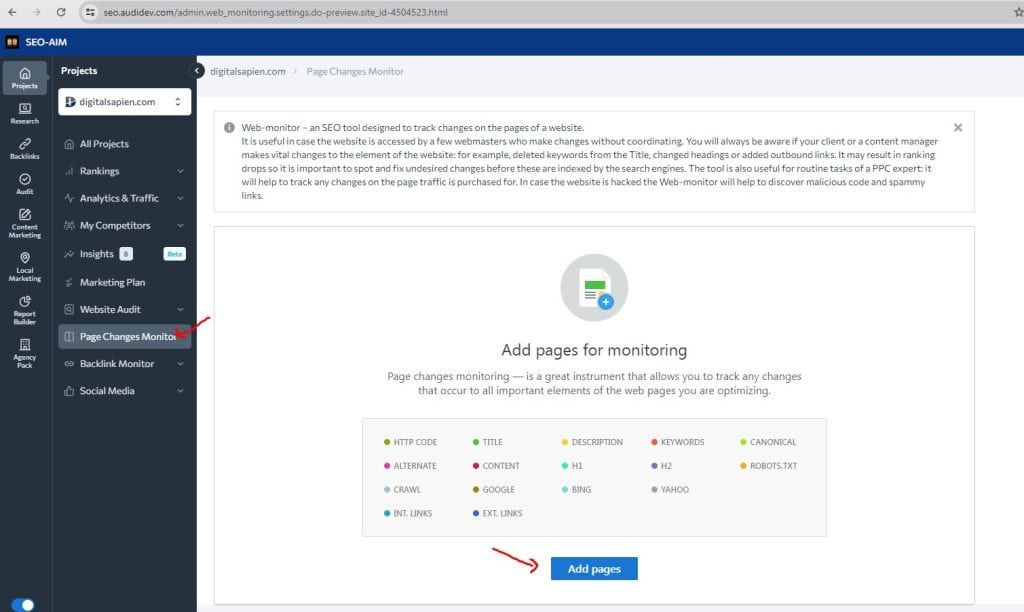How to Monitor Page Changes with SEO-AIM
Adding Pages for Monitoring
To begin tracking page changes with SEO-AIM, ensure you have a project created. If not, follow the provided manual to set it up. Navigate to the Page Changes Monitoring tool tab and click the “Add” button.

- Manually: Add pages individually.
- File Import: Bulk import from .XLS, .XLSX, or .CSV files.
Group your pages for organized monitoring, then click “Next” to proceed.
Choosing Parameters for Tracking
Specify whether to track changes on the entire page or specific elements. Key elements like Meta Title, Meta Description, and Meta Keywords are always tracked. Additional elements are tracked when tagged in the HTML code.
Customize tags to avoid network discovery and monitor specific blocks on competitors’ pages.
Exclude parts from scanning if needed, then make the site changes accordingly before clicking “Next.”
Setting Scanning Frequency
SEO-AIM scans pages based on your chosen frequency:
- Every day
- Once every 3 days
- Once a week
- Once a month
- Within selected days
- On-demand
Set the scan start time, and, if applicable, specify the day of the week or month for scanning. Receive notifications in the hub or via email by adding up to 5 addresses.
Review settings and click “Save” if correct; otherwise, click “Back to results” for adjustments.
Editing Settings
Edit Page Changes Monitoring settings anytime by clicking the “Settings” button on the tool dashboard. Make changes and save them.
Definitions of Tracked Elements
Understand the tracked elements:
- HTTP CODE: Server response status via HTTP.
- TITLE, DESCRIPTION, KEYWORDS: Meta tags for title, short description, and relevance.
- CONTENT: Notifications about page or text block changes.
- H1, H2: Headings changes.
- ROBOTS.TXT: Changes in the file restricting search robots.
- INT. LINKS: Changes in internal links.
- EXT. LINKS: Changes in outbound links.
- CRAWL: Page accessibility for search engines.
- CANONICAL: Changes in canonical pages.
- ALTERNATE: Changes in alternative page versions.
- INDEX STATUS: Changes in page indexing status.
Receive immediate notifications for any alterations in these elements. Stay informed, stay proactive with SEO-AIM’s Page Changes Monitoring tool.
